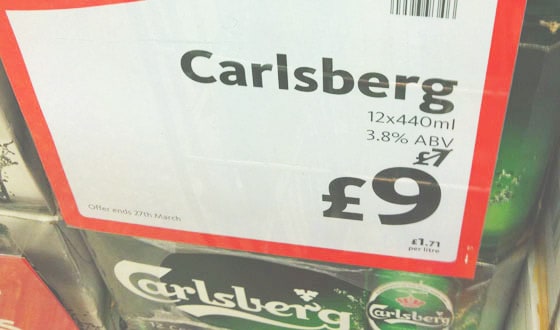Three Common Pricing Mistakes (and How to Avoid Them)
When businesses want to increase their profits, they will invariably try to get more customers, sell more products, reduce their marketing costs and cut overheads. They will do all of this before pricing ever enters the arena.
Why?
Because pricing is something even very astute business leaders often overlook.
Though this is frustrating for us – to see so much potential going to waste – there is an upside. If you’ve not given your pricing strategy the attention it deserves, it’s likely you are going to have some very quick wins.
Here are the three most common pricing mistakes we see businesses making, and how to correct them.
People tend to be clueless about prices. Contrary to economic theory,
we don’t really decide between A and B by consulting our invisible price tags
and purchasing the one that yields the higher utility. We make do with guesstimates
and a vague recollection of what things are ‘supposed to cost.’
– William Poundstone
Update Your Pricing
You wouldn’t believe how many businesses have the same prices that they did five (or even ten) years ago.
This is a really easy trap to fall into. Your customers are happy with your current pricing and, ‘if it isn’t broken, don’t fix it’, right?
Rising costs and inflation alone should mean you raise your prices each year. However, there are many other reasons for you to systematically increase your prices. Perhaps the most influential, is that an increase of as little as 1% can have a huge impact on your bottom line. Remember, your costs are already taken care of in your current structure. The price increase falls straight through to the bottom line. Our research shows that a price increase of just 1% on average increases an organisation’s net profits by 12%. So imagine the impact of a 3% price increase ! You’ll also be surprised at how little it bothers most customers/clients.
Tunnel Vision
A large number of businesses we come into contact with operate a singular, narrow pricing policy for each of their products or services. Again, if this is you, you might be leaving money on the table.
Let’s look at an example:
In a recent study, pricing experts ran a test on selling beer. They priced one beer at $1.80 and one at $2.50. 80% opted for the more expensive beer. In this case, the lower priced product only served to emphasise and highlight the quality of the more expensive beer. Due to the minimal added outlay, it made it an easy sell.
To further emphasise the impact of tiered pricing (and the importance of getting it right), the researchers ran a second test. This time they introduced a bargain price beer at $1.60. In this test, 80% of customers opted for the $1.80 beer (the middle one). Obviously, this was disastrous for the profit margins.
Finally, the researchers removed the bargain beer and added a ‘super premium’ option at $3.40. In this test, 85% of customers opted for the $2.50 premium option. So, by simply offering more price options, this vendor was making an extra $0.70 (38%) per beer!
“The mistake is to have only one price for your product.”
– Nathan Barry
Lowest is Best
If your product or service is priced lower than all your competitors, you’ll get more business, right? And because you’re doing greater volume, you’ll make more money?
Unfortunately, this only works if you’re selling exactly the same product as your competitors – and we mean exactly the same.
Don’t price your products based on what other companies think theirs is worth – or the common denominator. Price it based on the value it offers your customers.
If you can revise your pricing strategy with these common mistakes in mind you will already be ahead of most of businesses. What’s more, you’ll also be on your way to unlocking the untapped profit potential in your business.
If these common mistakes sounded familiar, why not get in touch? We’ve helped hundreds of businesses make simple changes to their pricing strategy that’s helped make huge differences to their bottom line. It would be great to hear from you.
This article was written by Tony Hodgson, Managing Director of Pricing Solutions UK





